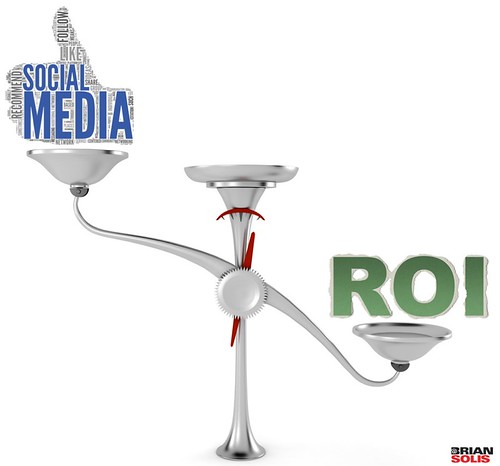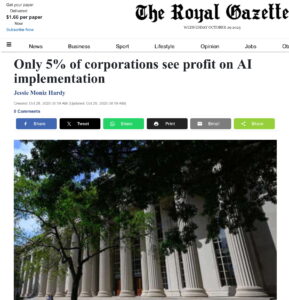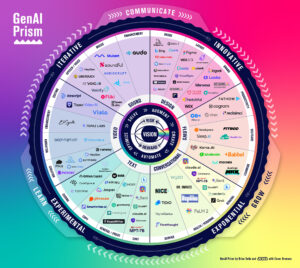
I recently presented at Microstrategy’s iCommerce Summit in Amsterdam on the importance of looking inside to improve how to engage on the outside. Following the event, I was invited to join Peter Gentsch of Big, Michael Buck of Dell, and Andreas Bock of Telekom. The conversation explored the importance of rethinking how businesses approach social media. Rather than driving social media strategies based on just clever ideas, campaigns, soft KPIs, and intangible results, I shared the importance of focusing on the bigger picture. At stake is nothing less than not only the future of social media in your organization, but more importantly, how decision makers recognize and value relationships throughout the customer life cycle.
I’m often asked what advice do I have for social media strategists and managers. While my answer is below, the truth is that we have to stop talking about social media as the catalyst for earning internal support and instead view it as one of the enablers for transformation.
Executives don’t think about tools they think about results. Aligning social and digital strategies with business objectives and priorities is the foundation for earning buy-in from the c-suite. Talking about Facebook, Twitter, Youtube and attempting to create “new” metrics to substantiate investments is ultimately a losing battle. And quite honestly, you’re risking competitive positioning and customer relationships by not thinking about engagement in channels where people are of their own free will and mind to come and go as they please.
The takeaway is to think about social media, mobile, web, as a holistic digital strategy that drives desired experiences and outcomes.
Welcome to the era of tangible where business value and outcomes are factored into digital strategy and prioritization. Otherwise you’re just doing social media either for the sake of it or because it’s what everybody else is doing. And, what good is that?
Connect with me: Twitter | LinkedIn | Facebook | Google+
The End of Business as Usual is officially here…






As always, ahead of the pack and spot on!
Thank you sir.
You are most welcome, Brian and it’s meant sincerely too.
More than insightful, a message of change!
Yes!
Very crafty observations. I have always viewed social media like a good point guard. It is the ultimate facilitator.
Hey Brian,
Thanks for the information. There’s such a demand for social media managers to “sell” the value of social media to CEO’s. As soon as they position SM tools as “a way to listen to conversations on Twitter and potentially save millions” there’s no way a CEO would say no. Their job is to be strategic in nature. However, the current struggle to see value in social media as a strategic business tool to reach overall business objectives is the managers ability to articulate value. Again, they need to sell with a strategic approach!
Again, great information 🙂
very true
Great
work!
Brian, lets talk about CRM again…
I think this is right on. And all SM roads need to lead back to your site so you can SYS – Sell Your Stuff – Thanks I need to remember to check your site. I forget!
You’re welcome back any time…
Great read. Had this conversation with a prospective client late last week.
This was a great article. Very insightful.
Thanks Brian, love the message, personally have experienced growth, engagement and experience worldwide. Like going to a cocktail party, happy hour somewhere in this dynamic global world we live in.
Finally we are talking about driving real business value, the end game everyone should be thinking about.
Indeed.
I love the slight language change from “social media” to “technology.” Subtle but somehow very powerful. It signals a mindset change that can put C-level execs at ease, and makes social media “evangelists” stop sounding like they are just trend followers and might actually understand business. Finally, a word that creates common ground. Thanks!
I think that’s what this is all about…finding common ground to take the next steps together.
This is my favorite sentence in the entire piece . . .
“Executives don’t think about tools they think about results.”
The client doesn’t want products or services. They want an outcome. People want value for their money and value comes in the form of results. Therefore we sell results, not products or services.
But the promise of “More Leads, More Engagement, More Awareness” is hardly compelling and is echoed by the majority of your competitors.
So in the interest of not being drown out in a sea of “Me Too”, it is wise to pursue selling a tangible, measurable result that the executive can expect to experience in the real world.
People like it when you can promise them something tangible they can see, feel, hear, or touch. If you’re not selling a tangible result, you’re selling magic beans.
The legendary direct response copywriter Gary Bencivenga when just cutting his teeth in the game of winning direct mail corporate clients for his ad shop used to promise to beat your control (best performing ad) by at least 10%. He also offered to pay for half of the cost of the test mailing. And if this specific and tangible result promised didn’t occur, you didn’t pay for his services, PLUS he’d pay for the client’s half of the test mailing. Gary made it explicitly clear that if he didn’t deliver, you didn’t pay. And the rest is history as he’s gone down as not only one of the greatest copywriters who’s ever lived, but also one of the best paid.
I like that “No Magic Beans” kinds of approach.
Put another way, “Sell the sizzle, not the steak” to the c-suite and/or customers, and buy-in will improve dramatically.
Fantastic, this has just sparked a lot of ideas for a presentation I’m giving to the board of directors at the marketing agency I work for! This has given me a common language to talk to them in a meaningful way, avoiding a lot of social media BS speak that gets flung around!